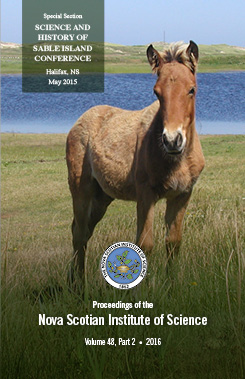The precarious freshwater resources of Sable Island, Nova Scotia, Canada: Occurrence and management considerations
DOI:
https://doi.org/10.15273/pnsis.v48i2.6662Abstract
This paper presents an overview of the hydrogeology and the freshwater resources of Sable Island, Nova Scotia. The role of the sand deposits, morphology and dynamics of the dune structures and systems, precipitation, and tidal influences are discussed. The distribution, quality, and importance of both surface water and groundwater resources of the island are also presented.
Fresh groundwater on the Island occurs in an unconfined sand lens aquifer. Studies to date on the hydrogeology of the island have shown highly variable rates of precipitation, both seasonally and annually, which in combination with the influence of shifting dune structures contribute to a dynamic freshwater /saltwater balance. Infiltration rates into the permeable aquifer system are greater than precipitation rates, precluding surface water flow.
The chemical quality of water in the freshwater lens aquifer is generally good and meets the Guidelines for Canadian Drinking Water Quality. The aquifer is vulnerable to surface contamination, however, due to its shallow, unconfined nature, and any water supply wells are highly likely to be classified as being ‘under the direct influence of surface water‘ (GUDI). Under these conditions a multi-barrier source water protection plan is considered essential for managing future public drinking water supplies on the Island. Recommendations for future studies, including long-term monitoring of water level trends, are provided to support the sustainable use of groundwater on the Sable Island.


